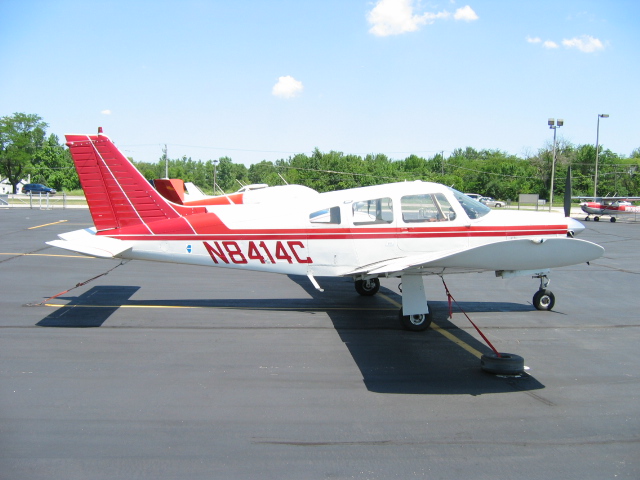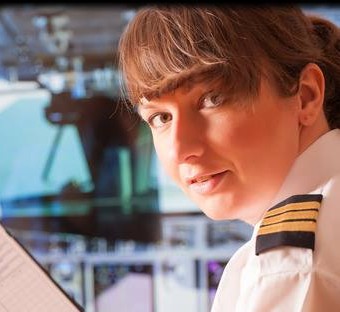CALL 708-299-8246 for more information regarding Commercial Licenses at Flight School Chicago – Cessna Pilot Center.
The time duration of obtaining a commercial pilot license depends on student schedule and proficiency. Flying often, studying frequently and efficiently and being prepared for each flight lesson will ensure that the goal is achieved at a lower cost and within the minimal timeframe.
FAR 61.123 [Eligibility Requirements] [Excerpt]
To be eligible for a commercial pilot certificate, you must:
Be at least 18 years of age.
Be able to read, speak, write and understand the English language.
Hold at least a private pilot certificate.
Meet the aeronautical experience requirements of this section that apply to the aircraft category and class rating sought.
Pass the knowledge test.
Pass the practical test.
To exercise the privileges of a commercial pilot certificate, you must hold at least a current second-class medical certificate.

Piper Arrow – Complex Aircraft
FAR 61.125 [Aeronautical Knowledge] [Excerpt]
If you are applying for a commercial pilot certificate you must receive and log ground training from an authorized instructor or complete a home-study course on the aeronautical knowledge areas of this section that apply to the aircraft category and class rating sought.
FAR 61.129 [Aeronautical Experience] [Excerpt]
For a helicopter rating:
If you are applying for a commercial pilot certificate with a rotorcraft category and helicopter class rating, you must log at least 150 hours of flight time as a pilot (of which 25 hours, or in accordance with FAA Part 142, a maximum of 50 hours may have been accomplished in an approved flight simulator or approved flight training device that represents a helicopter) that consists of at least:
100 hours in powered aircraft, of which 50 hours must be in helicopters.
100 hours of pilot in command flight time, which includes at least 35 hours in helicopters, and 10 hours in cross-country flight in helicopters.
20 hours of training on the areas of operation as listed for this rating, that includes at least 5 hours of instrument training in an aircraft, one cross-country flight of at least 2 hours in a helicopter in day VFR conditions, consisting of a total straight-line distance of more than 50 nautical miles from the original point of departure, one cross-country flight of at least 2 hours in a helicopter in night VFR conditions, consisting of a total straight-line distance of more than 50 nautical miles from the original point of departure.
10 hours of solo flight in a helicopter on the areas of operation as listed for this rating, which includes at least one cross-country flight with landings at a minimum of three points, with one segment consisting of a straight-line distance of at least 50 nautical miles from the original point of departure, and 5 hours in night VFR conditions with 10 takeoffs and 10 landings (with each landing involving a flight in the traffic pattern).
For an airplane single engine rating:
If you are applying for a commercial pilot certificate with an airplane category and single engine class rating, you must log at least 250 hours of flight time as a pilot (of which 50 hours, or in accordance with FAA Part 142, a maximum of 100 hours may have been accomplished in an approved flight simulator or approved flight training device that represents a single engine airplane) that consists of at least:
100 hours in powered aircraft, of which 50 hours must be in airplanes.
100 hours of pilot in command flight time, which includes at least 50 hours in airplanes and 50 hours in cross-country flight in airplanes.
20 hours of training on the areas of operation as listed for this rating, that includes at least 10 hours of instrument training, of which at least 5 hours must be in a single engine airplane, 10 hours of training in an airplane that has a retractable landing gear, flaps, and a controllable pitch propeller, or is turbine-powered, one cross- country flight of at least 2 hours in a single engine airplane in day VFR conditions, consisting of a total straight-line distance of more than 100 nautical miles from the original point of departure, one cross-country flight of at least 2 hours in a single engine airplane in night VFR conditions, consisting of a total straight-line distance of more than 100 nautical miles from the original point of departure.
10 hours of solo flight in a single engine airplane, including one cross-country flight of not less than 300 nautical miles total distance and as specified, and 5 hours in night VFR conditions with 10 takeoffs and 10 landings (with each landing involving a flight in the traffic pattern) at an airport with an operating control tower.
For an airplane multi engine rating:
If you are applying for a commercial pilot certificate with an airplane category and multi engine class rating, you must log at least 250 hours of flight time as a pilot (of which 50 hours, or in accordance with FAA Part 142, a maximum of 100 hours may have been accomplished in an approved flight simulator or approved flight training device that represents a multi engine airplane) that consists of at least:
100 hours in powered aircraft, of which 50 hours must be in airplanes.
100 hours of pilot in command flight time, which includes at least 50 hours in airplanes, and 50 hours in cross-country flight in airplanes.
20 hours of training on the areas of operation as listed for this rating, that includes at least 10 hours of instrument training of which at least 5 hours must be in a multi engine airplane, 10 hours of training in a multi engine airplane that has a retractable landing gear, flaps, and controllable pitch propellers, or is turbine-powered, one cross-country flight of at least 2 hours in a multi engine airplane in day VFR conditions, consisting of a total straight-line distance of more than 100 nautical miles from the original point of departure, one cross-country flight of at least 2 hours in a multi engine airplane in night VFR conditions, consisting of a total straight-line distance of more than 100 nautical miles from the original point of departure.
10 hours of flight time performing the duties of a pilot in command in a multi engine airplane with an authorized instructor on the areas of operation as listed for this rating, which includes at least one cross-country flight of not less than 300 nautical miles total distance and as specified, and 5 hours in night VFR conditions with 10 takeoffs and 10 landings (with each landing involving a flight in the traffic pattern) at an airport with an operating control tower.
Permitted credit for use of advanced flight training equipment:
Except when fewer hours are approved by the Administrator (FAA), an applicant for a commercial pilot certificate with an airplane, helicopter, or a powered-lift rating who has satisfactorily completed an approved commercial pilot course conducted by a training center certificated under FAA Part 142 of this chapter need only have a total of 190 hours for an airplane or powered-lift rating and total of 150 hours for a helicopter rating to meet the aeronautical experience requirements of this section.
